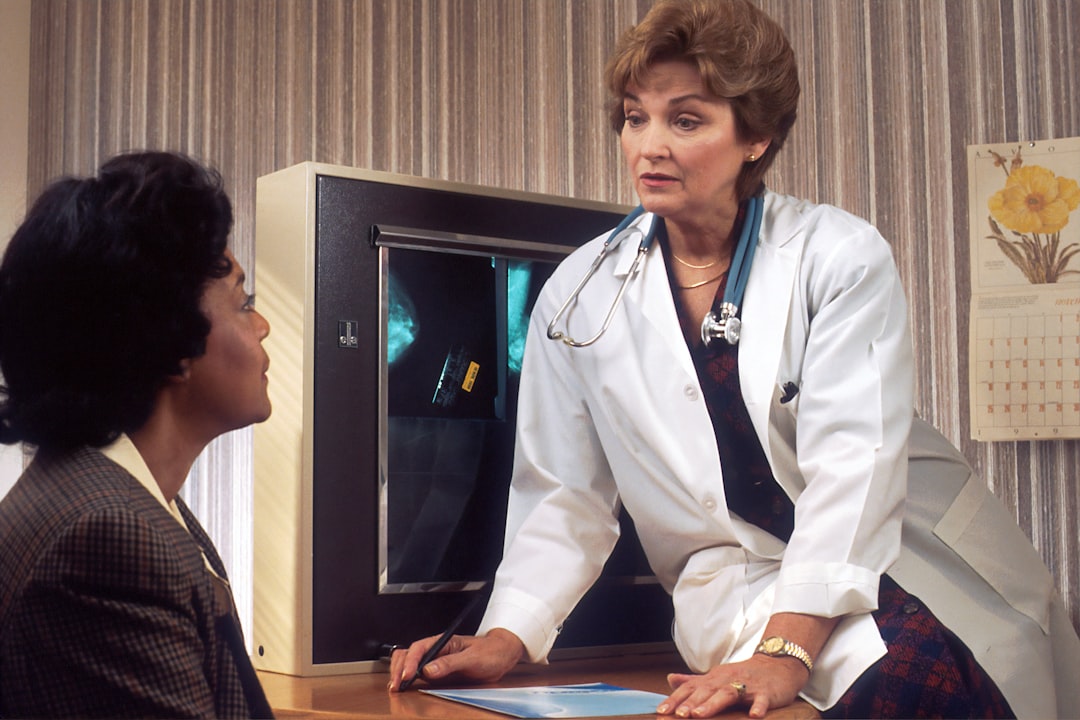Common Types of Surgical Errors
Surgical errors, though relatively rare in the grand scheme of medical procedures, represent a significant concern within healthcare. These errors can have profound consequences for patients, potentially leading to prolonged recovery times, additional surgeries, or even life-threatening situations. Understanding the common types of surgical errors is crucial for both medical professionals and patients to minimize risks and enhance surgical outcomes.
One prevalent type of surgical error is wrong-site surgery. This occurs when an operation is performed on the wrong part of the body. Such mistakes might seem unfathomable given the rigorous protocols in place, but they can happen due to miscommunication among surgical staff or inaccuracies in patient records. Wrong-site surgeries are not only physically devastating but also emotionally distressing for patients who must endure further procedures to correct the mistake.
Another common error involves retained surgical instruments or items within a patient's body post-operation. Despite counting protocols designed to prevent this issue, small tools like sponges or clamps can occasionally be left inside a patient. This oversight may lead to severe infections or other complications if not promptly identified and corrected. The use of advanced technologies such as barcode scanning has been implemented in many hospitals to reduce these incidents significantly.
Anesthesia-related errors also form a critical category of surgical mishaps. Administering too much anesthesia can result in prolonged unconsciousness or respiratory complications, while insufficient amounts may cause a patient to regain consciousness during surgery-an alarming and painful experience known as intraoperative awareness. Ensuring precise dosages tailored to each patient's health profile is paramount in preventing these scenarios.
Additionally, nerve damage during surgery represents another frequent error that can have lasting implications for patients' quality of life. Surgeons sometimes inadvertently cut or compress nerves during operations, leading to loss of sensation or motor function in affected areas. While some nerve injuries heal over time, others may require long-term rehabilitation or further interventions.
Preventive strategies play a vital role in reducing surgical errors across medical facilities globally. These include thorough pre-surgical planning sessions that involve all members of the operating team reviewing each step involved in the procedure; employing checklists like those advocated by the World Health Organization; and fostering a culture where team members feel empowered to speak up about potential safety concerns without fear of retribution.
In conclusion, while no system can entirely eliminate human error from complex processes like surgery, understanding common types of surgical mistakes allows healthcare providers to develop more effective preventive measures and improve patient safety outcomes significantly. Continuous education for both medical personnel and patients about these risks contributes towards more informed decisions regarding treatment options and fosters greater trust between doctors and those they serve.
Causes and Risk Factors
Surgical errors are unfortunate and often preventable occurrences that can have severe consequences for patients, healthcare professionals, and the medical community at large. Understanding the causes and risk factors associated with surgical errors is crucial in developing strategies to minimize their occurrence and improve patient safety.
One of the primary causes of surgical errors is human error, which can stem from a variety of sources. Fatigue among surgeons and surgical staff is a significant contributor. Long hours, night shifts, and inadequate rest periods can lead to impaired judgment, decreased concentration, and slower reaction times. This fatigue-induced cognitive impairment increases the likelihood of mistakes during surgery.
Communication breakdowns also play a critical role in surgical errors. Inadequate or miscommunication between team members can result in incorrect procedures being performed or vital information being overlooked. For example, if a surgeon does not clearly convey specific instructions to their team or if there is confusion about patient details due to poor handover practices, it could lead to catastrophic outcomes.
Another factor contributing to surgical errors is insufficient training and experience. Surgeons who are new to certain procedures may lack the necessary skills or familiarity with potential complications that might arise during surgery. Additionally, complex surgeries require a highly coordinated effort among various medical professionals; any lack of competency within this team can increase the risk of error.
Systemic issues within healthcare institutions also contribute significantly to surgical errors. Poorly designed operating rooms, inadequate equipment maintenance, and insufficient staffing levels create an environment where mistakes are more likely to occur. Furthermore, pressure on medical facilities to perform high volumes of surgeries often leads to rushed procedures without proper preparation or follow-up care.
Patient-related factors cannot be ignored when discussing risk factors for surgical errors. Patients with pre-existing conditions or those undergoing emergency surgeries may present additional challenges that increase the complexity of a procedure. Moreover, incomplete patient histories or inaccurate documentation can lead surgeons astray during operations.
Finally, technological failures pose another risk factor for surgical errors. Although modern technology has greatly enhanced surgical precision and safety, it is not infallible. Malfunctioning equipment or software glitches during robotic-assisted surgeries can inadvertently cause harm if not promptly identified and addressed by the surgical team.
In conclusion, while some degree of risk will always be inherent in surgery due to its complex nature, understanding the multifaceted causes and risk factors associated with surgical errors enables healthcare providers to implement effective preventative measures. By addressing human factors such as fatigue and communication issues alongside systemic inadequacies like resource allocation and training deficiencies-healthcare systems can work towards significantly reducing these potentially devastating events for patients worldwide.
Impact on Patients and Healthcare Systems
Surgical errors, an unfortunate reality in the medical field, have profound impacts on patients and healthcare systems alike. These errors can range from wrong-site surgeries to leaving instruments inside a patient's body, and their consequences are often dire. The immediate impact on patients is physical trauma, which can lead to prolonged recovery times, additional surgeries, and sometimes permanent disability or even death. Beyond the physical implications, there is a significant psychological toll as well; patients may experience anxiety, depression, or a loss of trust in medical professionals following such incidents.
From a broader perspective, the repercussions of surgical errors extend into the fabric of healthcare systems. Financially, these errors impose substantial costs due to extended hospital stays, legal fees from malpractice lawsuits, and compensation payouts. Moreover, they contribute to increased insurance premiums for healthcare providers and institutions. The ripple effects reach staffing as well; when surgical errors occur, they can impact the morale of the entire team involved. Healthcare professionals may face intense scrutiny and stress after an error is identified.
Moreover, surgical errors erode public confidence in healthcare systems. When patients perceive that safety is compromised during surgical procedures, it undermines trust in medical institutions and professionals. This lack of trust can deter individuals from seeking necessary medical interventions or prompt them to seek care elsewhere-even if it means traveling long distances-which further strains other facilities.
Efforts to mitigate surgical errors are crucial for both patient safety and the sustainability of healthcare systems. Implementing rigorous training programs for surgeons and staff members ensures adherence to best practices during surgery. Additionally, adopting advanced technologies like computer-assisted surgery or enhanced imaging techniques can help reduce human error.
In conclusion, while surgical errors represent a small percentage of overall surgeries performed globally each year, their impact cannot be overstated. They affect not only the individuals who suffer directly but also exert pressure on already burdened healthcare systems trying to maintain quality care amidst growing demands. Addressing these challenges requires concerted efforts from all stakeholders-patients included-to foster environments where safety is prioritized above all else.
Prevention Strategies and Best Practices
Surgical errors, regrettably, remain a significant concern within the realm of healthcare, often leading to severe complications, extended hospital stays, or even fatalities. Addressing this issue requires an unwavering commitment to prevention strategies and adherence to best practices. By fostering a culture of safety, enhancing communication among medical teams, and implementing stringent protocols, healthcare providers can significantly reduce the incidence of surgical errors.
To begin with, establishing a culture of safety is paramount in minimizing surgical errors. This involves creating an environment where all team members feel empowered to speak up about potential risks without fear of retribution. Encouraging open dialogue and reporting of near-misses are crucial steps in identifying vulnerabilities within the surgical process. Furthermore, continuous education and training for surgical teams help maintain high standards of practice and ensure that all members are well-versed in the latest techniques and technologies.
Communication stands as another cornerstone in preventing surgical mishaps. Effective communication ensures that every member of the surgical team is aligned on the procedure's objectives and aware of each patient's unique needs. Tools such as checklists have proven effective in standardizing communication before, during, and after surgery. The World Health Organization Surgical Safety Checklist is an exemplary tool that facilitates clear communication among team members at critical junctures in the surgical process.
Moreover, implementing stringent protocols can significantly curtail errors during surgery. Standardized operating procedures should be meticulously developed and regularly reviewed to adapt to new evidence or technological advances. Adhering strictly to these protocols helps minimize variability in practice and ensures consistency across different teams and institutions.
Technology also plays a pivotal role in reducing surgical errors through innovations like computer-assisted surgery or robotic systems that enhance precision beyond human capabilities. However, it is essential to recognize that technology is not a panacea; rather it should complement robust training programs and human oversight.
In conclusion, preventing surgical errors demands a multifaceted approach rooted in a culture of safety, effective communication strategies, adherence to standardized protocols, and judicious use of technology. By committing to these prevention strategies and best practices, healthcare professionals can profoundly impact patient outcomes by minimizing the likelihood of avoidable mistakes during surgery. It is through such concerted efforts that we can uphold patient trust and deliver care at its highest standard.
Legal and Ethical Considerations
Surgical errors, often referred to as "never events," represent a significant concern in the medical field due to their potential to cause severe harm or even death to patients. They bring forth critical legal and ethical considerations that healthcare professionals must navigate with utmost diligence.
Legally, surgical errors can lead to malpractice suits, where the injured party seeks compensation for damages incurred. The legal framework governing these situations is primarily based on negligence. To establish a case of medical negligence, the plaintiff must prove that there was a breach of duty of care by the surgeon or medical staff, this breach directly caused an injury, and that real damages resulted from this injury. The standard of care is typically determined by what a reasonably competent practitioner would have done under similar circumstances. In legal proceedings, expert testimonies are often crucial in establishing whether the standard of care was met or breached.
Ethically, surgeons are bound by several principles including autonomy, beneficence, non-maleficence, and justice. Autonomy requires respecting patients' rights to make informed decisions about their own healthcare; thus, obtaining informed consent prior to surgery is both an ethical and legal mandate. Beneficence and non-maleficence obligate healthcare providers to act in the best interest of patients and avoid causing harm. When errors occur despite best efforts, these principles compel practitioners to disclose mistakes transparently and take responsibility which aligns with the ethical principle of honesty.
The ethical principle of justice demands fairness in delivering healthcare services without discrimination. This includes ensuring equitable access to high-quality surgical care and addressing disparities that may contribute to higher rates of errors in underserved populations.
Healthcare institutions also play a vital role by fostering environments that prioritize patient safety through rigorous training programs, adherence to standardized protocols, and encouraging open communication among team members. Implementing systemic changes such as checklists and timeouts before surgeries can significantly reduce human error.
In conclusion, while surgical errors pose serious challenges within both legal and ethical realms, they also provide opportunities for improvement in patient safety standards. By integrating robust legal frameworks with strong ethical guidelines into everyday practice, healthcare systems can better protect patients while upholding the trust placed in them by society at large.
Role of Technology in Reducing Errors
The role of technology in reducing surgical errors has become increasingly significant as medical advancements continue to evolve. Surgical procedures, known for their complexity and precision requirements, have historically been prone to human error, which can lead to severe consequences for patients. However, with the integration of advanced technologies into the surgical landscape, there is a promising reduction in these errors, enhancing both patient safety and outcomes.
One of the most pivotal technological advancements in surgery is the adoption of robotic-assisted systems. These systems provide surgeons with enhanced dexterity and precision that far surpasses human capability alone. Robotic arms equipped with high-definition cameras allow for magnified views of the surgical field, enabling surgeons to perform intricate procedures with minimal invasiveness. This precision reduces the likelihood of accidental damage to surrounding tissues and organs, a common source of surgical errors.
In addition to robotics, imaging technologies have revolutionized preoperative planning and intraoperative navigation. Technologies such as 3D imaging and augmented reality provide detailed anatomical maps that guide surgeons during operations. By visualizing complex structures in three dimensions before making an incision, surgeons can anticipate potential challenges and devise strategies to mitigate risks. Real-time imaging during surgery further enhances accuracy by allowing continuous assessment of progress and adjustments as needed.
Artificial intelligence (AI) also plays a transformative role by serving as an invaluable decision-support tool. Machine learning algorithms can analyze vast amounts of medical data swiftly to assist in diagnosing conditions or predicting complications based on patterns not immediately apparent to human eyes. Intraoperatively, AI systems can alert surgical teams to anomalies or deviations from standard procedure protocols, providing an additional layer of vigilance against potential errors.
Furthermore, electronic health records (EHRs) integrated with advanced analytics ensure that critical patient information is readily accessible throughout the surgical process. This accessibility minimizes miscommunication and ensures that all members of the surgical team are informed about patient-specific factors such as allergies or previous complications that could impact the current procedure.
Training and simulation technologies have also contributed significantly by preparing surgeons through virtual reality (VR) platforms where they can practice complex surgeries without risk to actual patients. These simulations offer a safe environment for honing skills and refining techniques before operating in real-life scenarios.
While technology has undoubtedly reduced the incidence of surgical errors, it is crucial to acknowledge its limitations and maintain a balanced approach integrating human expertise with technological support. Surgeons' experience and intuition remain irreplaceable assets; thus, technology should be viewed as an augmentation rather than a replacement for human skill.
In conclusion, technology's role in reducing surgical errors is indispensable yet continually evolving. Robotics, imaging innovations, artificial intelligence, comprehensive EHRs, and advanced training tools collectively foster an environment where precision is prioritized over assumption-a shift crucial for minimizing risk in surgery. As these technologies advance further while being seamlessly integrated into healthcare systems globally, they hold promise not only for reducing errors but ultimately improving patient recovery experiences across diverse medical fields.





